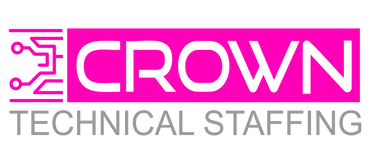The manufacturing industry faces a critical shortage of skilled workers, a dilemma intensifying with inevitable demographic shifts away from large cities, the aging and gradual retirement of baby boomers, and the emergence and adoption of advanced technological solutions. Nearly one-fourth of the manufacturing workforce is age 55 or older, which signals a labor shortage for the nation’s fifth-largest employer. As these older workers retire, there is a need to attract and retain quality workers. Despite this, the influx of female workers into the industry remains sluggish. This isn’t due to a lack of interest among women; indeed, more than 81% of women employed in the sector would recommend a career in manufacturing, up from 75% in 2021.
I recently attended the Women in Manufacturing (WiM) South Region Conference in Atlanta and optimism is at an all-time high regarding women’s progress in the sector. In response to the labor shortage, the industry has launched various initiatives aimed at recruiting more women, including job boards, industry events, and training programs, underscoring the fulfilling and rewarding careers women can find in manufacturing.
However, a more effective approach might be for industry leaders to reverse their strategy: instead of promoting what manufacturing can offer women, they should seek to understand what women desire from manufacturing roles. For women, the key factors are the opportunity to utilize their strengths and achieve work-life balance.


How Can We Attract More Women into the Manufacturing Sector
Companies should focus on assessing, deploying, and developing their employees’ strengths daily. By leveraging tools like the CliftonStrengths assessment, companies can gain insights into the innate talents of individuals, distinguishing between being merely capable and excelling. Addressing the training needs of newcomers, particularly women, who are underrepresented and often inexperienced in the field, is crucial. On-the-job training or tuition reimbursement programs can play a vital role in making manufacturing roles more accessible. In addition, job flexibility remains a critical priority, with many workers willing to leave their current roles for more adaptable working conditions. Smaller manufacturing firms might have the advantage here, offering perks that not only meet financial constraints but also resonate with their company culture, promoting autonomy and accommodating diverse lifestyles.

It’s also helpful to note that women seek out manufacturing careers for very different reasons than men. 93% stated job postings were their gateway into the industry versus 7% of the men stating the same. Co-op programs came in as an equally strong gateway with 95% stating this was how they were introduced to a career in manufacturing.

In conclusion, as the industry continues to confront job vacancies, an aging workforce, and evolving workforce expectations, embracing a cultural shift that values and integrates the strengths and needs of women not only addresses the immediate labor shortages but also sets the stage for a more dynamic, inclusive, and successful manufacturing future.
Here are 3 ways that we can help…
CTS carries out deep talent mapping, nationwide, to ensure our shortlists contain only the very best leaders for your Engineering and Manufacturing teams.
1. We help to attract and retain the best candidates, specifically for your team, in addition to the frontline leaders that you’ll need for growth and stability.
2. Reduce the cost of acquiring and training new hires by supporting and enhancing the efforts of your onboarding team for the first 90 days.
3. Provide a zero-risk and no-cost assessment of your hiring strategies with a 15-minute consultation.
Ready to elevate your talent and hiring strategy? Explore our latest tool tailored for VPs and Directors in the manufacturing sector. In just 2 minutes, gain insights to boost engagement and help strengthen your leadership team. In addition, receive a customized report for your team. See the link below.


